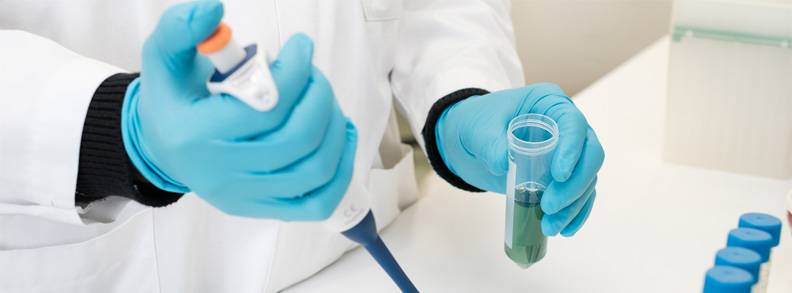Hit to lead
Once a promising drug target has been identified, researchers aim to identify molecules that can interact with the target to produce desired biological effects. A hit compound is a molecule that shows the desired type of activity in a screening assay. It is important to develop pharmacologically relevant screening assays for hit discovery and for the subsequent hit-to-lead selection process. Lead compounds are selected from a collection of hits by refining the screening criteria to enable the selection of the most promising molecules for further development. The secondary assays employed for lead selection may screen for off-target effects as well as physico-chemical and ADME (absorption, distribution, metabolism and excretion) characteristics.
There are several ways to find hit molecules. Researchers may use traditional high-throughput screening techniques to find hit molecules from thousands of chemicals contained in a chemical library. Other methods include affinity selection[MS1] of large chemical libraries, fragment-based techniques[MS2], target-focused libraries, identifying biologically active compounds from living organisms, use of biotechnology to harness living systems to produce new potential drug candidates and computer-aided structure-based drug design. Biologics (antibodies, vaccines, RNAi etc.) account for about one third of new drug approvals today. Especially monoclonal antibodies are a growing trend for biologics based therapies. Screening of antibody libraries against the target molecule is a possible source for hit identification.
Once hit molecules are identified, their analogues can be tested in order to determine structure-activity relationships (SAR) of the compounds. SAR information may be used for the selection and design of structural analogs with improved activity, and for the confirmation of the core structures of the molecules. In general, the purpose of the hit-to-lead process is to improve the potency, selectivity and physicochemical properties (e.g. solubility and stability) of the compounds for further in vitro and in vivo testing and for subsequent lead optimization. At this stage, it is time to perform early-phase preclinical pharmacokinetic and safety assessment of the potential lead compounds. These tests are typically performed both in vitro and in vivo, and may also involve physiologically-based pharmacokinetic modeling. A successful lead molecule should be absorbed into the bloodstream, distributed to the site of action, metabolized efficiently, excreted effectively from the body, and, above all, it should pass early-phase safety studies such as cytotoxicity and genotoxicity tests. Also, researchers should already be thinking about the final drug, its possible formulations, and how it will be administered to patients, for example orally or intravenously. The feasibility of its large-scale synthesis must also be considered, as well as its GMP manufacturing process. These aspects should be kept in mind throughout the subsequent phases of the drug discovery and development process.



